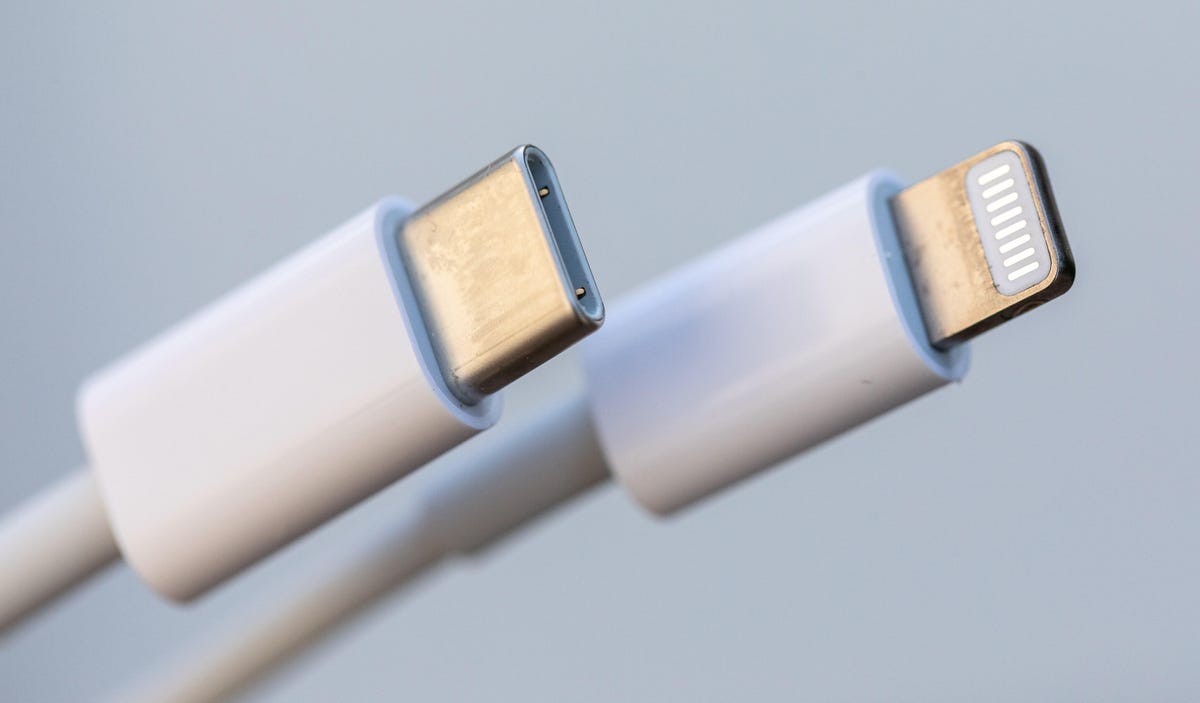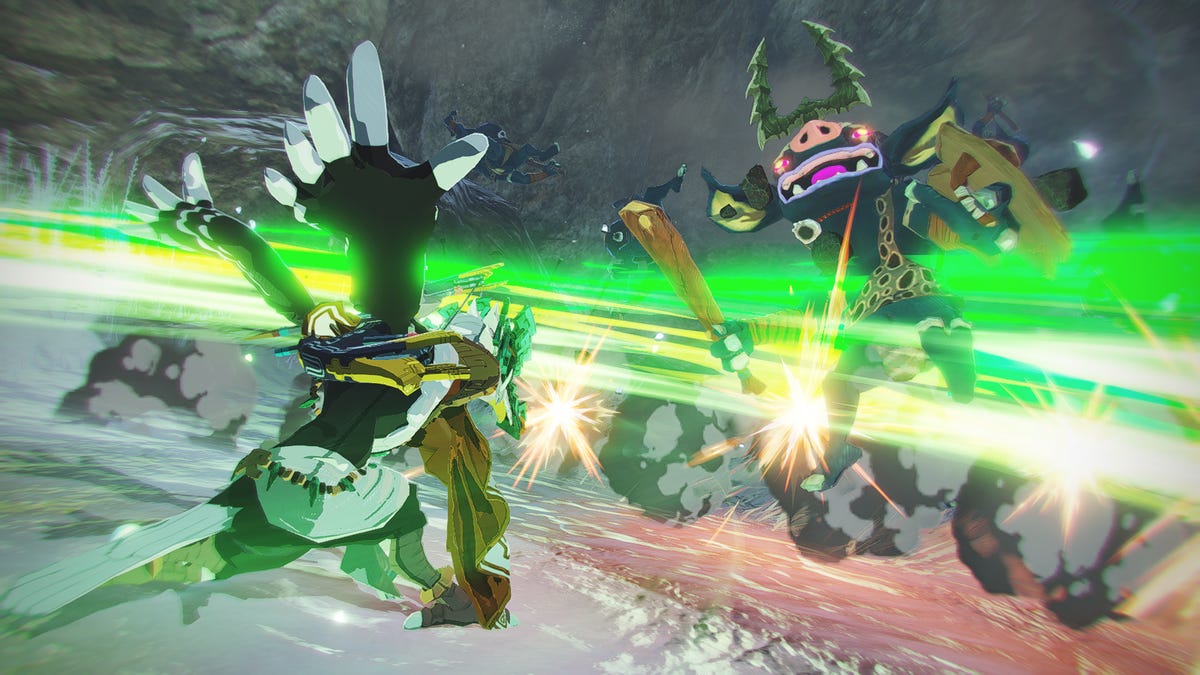Technologies
iPhone 15 and USB-C: Expect a Cable Mess, but You Might Not Mind
Commentary: USB-C’s versatility in charging and data transfer brings complications that millions of customers will now get to experience firsthand.

I love USB-C, the data and charging port I first encountered in my 2016 MacBook Pro that’s now spread to almost every device in my life.
I wanted a USB-C iPhone in 2018, back when Apple first added that tech to the iPad Pro. I grew more optimistic in 2021, when Apple spread USB-C to lower-end iPads. And though I’m skeptical that regulation is the best way to direct product development, I’m not displeased that the European Union has now pushed Apple toward USB-C. Charging everything with USB-C is great for me.
But here’s the bad news: Millions of people likely to enter the USB-C ecosystem will encounter the technology’s ugly side, too, with the iPhone 15 line, expected to be announced on Sept. 12.
See also: Apple’s Wonderlust Event: How to Tune In and What to Expect
The utility and flexibility of USB-C are tainted by confusion over just what the heck comes along with that USB-C port on the side of a device and the cable you plug into it. In short, it’s not always obvious whether your device or cable supports high-speed data transfer, high electrical power for fast charging, both, or neither.
If the rumors are right, the iPhone 15 will ship with a USB-C port and charging cable that’ll give customers a taste of the trouble. That cable reportedly will be fine for charging but will transfer data at a mere 480 megabytes per second, the poky speed that arrived with the USB 2.0 standard from 2000.
More from the Apple event
For most folks, the problem is likely to be merely an inconvenience. But it reflects the difficulties of the vast USB ecosystem, where the pressure to keep costs low is fierce and certification isn’t required. USB-C is a much faster, more useful connection technology than the Apple Lightning port iPhone users have had since 2012, but Apple customers will have to endure some pain leaving the cozy Lightning world.
Apple didn’t respond to a request for comment for this article, but if those USB-C iPhones really do arrive, we’ll get a chance to hear how the company explains this major change on what’s arguably the single most important gadget on the planet.
The triple whammy USB mess
Part of the problem with USB is that the term actually refers to three separate standards. Let me explain.
The original standard, Universal Serial Bus, governs how devices identify themselves and send data across a connection. USB arrived in 1996 with a top speed of 12Mbps, but USB 2.0 was much more useful at 480Mbps, enough for printers and thumb drives. The first big speed jump after that was USB 3.0 in 2008 at 5 gigabits per second, better for external hard drives. Successors hit 10Gbps, 20Gbps, and most recently 40Gbps with USB 4. The upcoming USB 4 version 2 should reach 80Gbps. That’s good for high-performance storage systems, fast networks, and big, high-resolution monitors.
The next standard is USB-C, which refers only to the oval-shaped connector technology. Earlier in USB-C’s history, it was common for Android phones to support only slow USB 2.0 data transfer speeds, though that problem has faded with newer models. The newest USB standard, USB 4.0, requires USB-C ports, so as time goes by, it’ll be fairer to equate USB-C with high speed.
Last is USB PD, short for Power Delivery, which governs how USB is used for charging at rates up to 240W. Most devices don’t require that much power, but they do need to know how to negotiate electrical matters — for example, whether a portable battery should charge your laptop or vice versa.

Having three standards — USB, USB-C and USB PD — makes it harder to understand the abilities of all your devices and cables.
Worse, plenty of device manufacturers trying to cut costs and quickly ship products skip the certification process that the USB Implementers Forum offers. Unlike with Intel’s Thunderbolt, which developed the fast data transfer approach in modern USB, there’s no requirement to pass tests.
Low costs fuel USB-C’s problems
Nobody wants to spend $60 instead of $15 for a USB cable. But be careful: You get what you pay for, roughly. It’s more expensive to build cables that support high-speed data or high-power charging. One rule of thumb: Cables billed as «charging cables» in my experience don’t bother with the extra cost of high-speed data support. That includes the USB-C cables Apple itself shipped with MacBooks for several years.
One affordable cable I saw billed itself as a USB 4 product, but on deeper inspection, it turned out to support only USB 2.0 data transfer. Either the manufacturer was confused, lying, or trying to argue that the cable would work in a USB 4 port even if it only supported slow data rates. (USB’s good backward compatibility means slower, older products generally still work fine when attached to newer ones.)
I haven’t struggled too much with the slow cable problem. Mostly I use USB-C for charging, and my devices that need fast connections stay attached to their own fast cables.
But problems can happen. A couple of months ago, when I got a new Canon mirrorless camera, I was caught on a trip with slow cables that really bogged down the process of transferring photos to my laptop.
When USB-C is a problem and when it’s not
The good news for future iPhone owners is that most of them won’t have to care much about whether they have a slow cable.
Data rates were more important in the olden days when we used iTunes to sync music and photos between laptops and iPhones. Even as photo and video files have exploded in size with 50-megapixel phone cameras and 4K video, most of us get that data off our phones with mobile networks, Wi-Fi and AirDrop, not with cables.
That’s the big reason Apple could mostly justify shipping an iPhone 15 with a USB 2.0 cable.
Now, for serious data hogs, the kind of person who’s shooting many gigabytes of 4K ProRes video, a faster cable is useful. Indeed, it’s one reason I’ve been annoyed with the Lightning port on my iPhone. Those customers will, I hope, generally be discriminating enough to find a high-quality cable for their needs — or, if rumors are correct, just use the faster cable that Apple will ship with iPhone Pro models.
I prefer buying USB-C products that passed USB-IF’s compliance testing. I look for the USB-IF certifications, and I love it when companies like Plugable attach clear descriptive labels so we don’t have to decode USB-IF icons. (And most products don’t even have icons.)

But if you’re nervous about doing the product comparisons yourself, you can always let Apple sales staff steer you to higher-end Apple USB-C accessories that generally work well together even if they’re often more expensive than third-party products.
USB-C transition less painful than Lightning
There was plenty of kvetching when Apple switched to the Lightning port, even though it was clear Lightning was superior to the bulky, fragile 30-pin connector that preceded it. I’m expecting more complaints with the iPhone’s USB-C switch as people discover that all those cables they have stashed in glove boxes, office desks, school backpacks and bedside tables have become obsolete.
But the good news is that USB-C is already very well established, and not just on MacBooks and many iPads. The oval-shaped connector is on modern Android phones, Windows laptops, Nintendo Switch gaming consoles, iPad Pro and Air tablets, Sony noise-canceling headphones and countless other devices. There’s a good chance a lot of us already have some spare USB-C cables lying around.
When I talk to USB-IF executives about the USB-C’s labeling problems, they assure me that most people don’t notice any sort of bother, and that the gradually maturing technology will mean incompatibilities and product shortcomings eventually will slip into the back of our collective junk drawers.
I hope so. For me, the flexibility and power of USB-C is well worth the pain. But I do wish there wasn’t so much pain.
Technologies
How to Get Verizon’s New Internet Plan for Just $25 Per Month
Technologies
This $20K Humanoid Robot Promises to Tidy Your Home. But There Are Strings Attached
The new Neo robot from 1X is designed to do chores. It’ll need help from you — and from folks behind the curtain.

It stands 5 feet, 6 inches tall, weighs about as much as a golden retriever and costs near the price of a brand-new budget car.
This is Neo, the humanoid robot. It’s billed as a personal assistant you can talk to and eventually rely on to take care of everyday tasks, such as loading the dishwasher and folding laundry.
Neo doesn’t work cheap. It’ll cost you $20,000. And even then, you’ll still have to train this new home bot, and possibly need a remote assist as well.
If that sounds enticing, preorders are now open (for a mere $200 down). You’ll be signing up as an early adopter for what Neo’s maker, a California-based company called 1X, is calling a «consumer-ready humanoid.» That’s opposed to other humanoids under development from the likes of Tesla and Figure, which are, for the moment at least, more focused on factory environments.
Neo is a whole order of magnitude different from robot vacuums like those from Roomba, Eufy and Ecovacs, and embodies a long-running sci-fi fantasy of robot maids and butlers doing chores and picking up after us. If this is the future, read on for more of what’s in store.
Don’t miss any of our unbiased tech content and lab-based reviews. Add CNET as a preferred Google source.
What the Neo robot can do around the house
The pitch from 1X is that Neo can do all manner of household chores: fold laundry, run a vacuum, tidy shelves, bring in the groceries. It can open doors, climb stairs and even act as a home entertainment system.
Neo appears to move smoothly, with a soft, almost human-like gait, thanks to 1X’s tendon-driven motor system that gives it gentle motion and impressive strength. The company says it can lift up to 154 pounds and carry 55 pounds, but it is quieter than a refrigerator. It’s covered in soft materials and neutral colors, making it look less intimidating than metallic prototypes from other companies.
The company says Neo has a 4-hour runtime. Its hands are IP68-rated, meaning they’re submersible in water. It can connect via Wi-Fi, Bluetooth and 5G. For conversation, it has a built-in LLM, the same sort of AI technology that powers ChatGPT and Gemini.
The primary way to control the Neo robot will be by speaking to it, just as if it were a person in your home.
Still, Neo’s usefulness today depends heavily on how you define useful. The Wall Street Journal’s Joanna Stern got an up-close look at Neo at 1X’s headquarters and found that, at least for now, it’s largely teleoperated, meaning a human often operates it remotely using a virtual-reality headset and controllers.
«I didn’t see Neo do anything autonomously, although the company did share a video of Neo opening a door on its own,» Stern wrote last week.
1X CEO Bernt Børnich told her that Neo will do most things autonomously in 2026, though he also acknowledged that the quality «may lag at first.»
The company’s FAQ says that for any chore request Neo doesn’t know how to accomplish, «you can schedule a 1X Expert to guide it» to help the robot «learn while getting the job done.»
What you need to know about Neo and privacy
Part of what early adopters are signing up for is to let Neo learn from their environment so that future versions can operate more independently.
That learning process raises privacy and trust questions. The robot uses a mix of visual, audio and contextual intelligence — meaning it can see, hear and remember interactions with users throughout their homes.
«If you buy this product, it is because you’re OK with that social contract,» Børnich told the Journal. «It’s less about Neo instantly doing your chores and more about you helping Neo learn to do them safely and effectively.»
Neo’s reliance on human operation behind the scenes prompted a response from John Carmack, a computer industry luminary known for his work with VR systems and the lead programmer of classic video games including Doom and Quake.
«Companies selling the dream of autonomous household humanoid robots today would be better off embracing reality and selling ‘remote operated household help’,» he wrote in a post on the X social network (formerly Twitter) on Monday.
1X says it’s taking steps to protect your privacy: Neo listens only when it recognizes it’s being addressed, and its cameras will blur out humans. You can restrict Neo from entering or viewing specific areas of your home, and the robot will never be teleoperated without owner approval, the company says.
But inviting an AI-equipped humanoid to observe your home life isn’t a small step.
The first units will ship to customers in the US in 2026. There is a $499 monthly subscription alternative to the $20,000 full-purchase price, though that will be available at an unspecified later date. A broader international rollout is promised for 2027.
Neo’s got a long road ahead of it to live up to the expectations set by Rosie the Robot in The Jetsons way back when. But this is no Hanna-Barbera cartoon. What we’re seeing now is a much more tangible harbinger of change.
Technologies
I Wish Nintendo’s New Switch 2 Zelda Game Was an Actual Zelda Game
Hyrule Warriors: Age of Imprisonment has great graphics, a great story and Zelda is actually in it. But the gameplay makes me wish for another true Zelda title instead.

I’ve never been a Hyrule Warriors fan. Keep that in mind when I say that Nintendo’s new Switch 2-exclusive Zelda-universe game has impressed me in several ways, but the gameplay isn’t one of them. Still, this Zelda spinoff has succeeded in showing off the Switch 2’s graphics power. Now can we have a true Switch 2 exclusive Zelda game next?
The upgraded graphics in Tears of the Kingdom and Breath of the Wild has made the Switch 2 a great way to play recent Zelda games, which had stretched the Switch’s capabilities to the limit before. And they’re both well worth revisiting, because they’re engrossing, enchanting, weird, epic wonders. Hyrule Warriors: Age of Imprisonment, another in the Koei-Tecmo developed spinoff series of Zelda-themed games, is a prequel to Tears of the Kingdom. It’s the story of Zelda traveling back in time to ancient Hyrule, and the origins of Ganondorf’s evil. I’m here for that, but a lot of hack and slash battles are in my way.
A handful of hours in, I can say that the production values are wonderful. The voices and characters and worlds feel authentically Zelda. I feel like I’m getting a new chapter in the story I’d already been following. The Switch 2’s graphics show off smooth animation, too, even when battles can span hundreds of enemies.
But the game’s central style, which is endless slashing fights through hordes of enemies, gets boring for me. That’s what Hyrule Warriors is about, but the game so far feels more repetitive than strategic. And I just keep button-mashing to get to the next story chapter. For anyone who’s played Hyrule Warriors: Age of Calamity, expect more of the same, for the most part.
I do like that the big map includes parts in the depths and in the sky, mirroring the tri-level appeal of Tears of the Kingdom. But Age of Calamity isn’t a free-wandering game. Missions open up around the map, each one opening a contained map to battle through. Along the way, you unlock an impressive roster of Hyrule characters you can control.
As a Switch 2 exclusive to tempt Nintendo fans to make the console upgrade, it feels like a half success. I admire the production values, and I want to keep playing just to see where the story goes. But as a purchase, it’s a distant third to Donkey Kong Bananza and Mario Kart World.
Hyrule Warriors fans, you probably know what you’re probably in for, and will likely get this game regardless. Serious Zelda fans, you may enjoy it just for the story elements alone.
As for me? I think I’ll play some more, but I’m already sort of tuning the game out a bit. I want more exploration, more puzzles, more curiosity. This game’s not about that. But it does show me how good a true next-gen Zelda could be on the Switch 2, whenever Nintendo decides to make that happen.
-

 Technologies3 года ago
Technologies3 года agoTech Companies Need to Be Held Accountable for Security, Experts Say
-

 Technologies3 года ago
Technologies3 года agoBest Handheld Game Console in 2023
-

 Technologies3 года ago
Technologies3 года agoTighten Up Your VR Game With the Best Head Straps for Quest 2
-

 Technologies4 года ago
Technologies4 года agoVerum, Wickr and Threema: next generation secured messengers
-

 Technologies4 года ago
Technologies4 года agoBlack Friday 2021: The best deals on TVs, headphones, kitchenware, and more
-

 Technologies4 года ago
Technologies4 года agoGoogle to require vaccinations as Silicon Valley rethinks return-to-office policies
-

 Technologies4 года ago
Technologies4 года agoOlivia Harlan Dekker for Verum Messenger
-

 Technologies4 года ago
Technologies4 года agoiPhone 13 event: How to watch Apple’s big announcement tomorrow
